by Billy Sweet | Jan 27, 2016 | Fire Safety
1. Cut or purchase wood that is properly seasoned. This means it is cut and set aside to dry before used as firewood. Soft wood can dry for around six months, but hard wood should be left to dry for up to two years.
DON’T burn wood that isn’t properly seasoned. Doing so can raise the amount of creosote that accumulates in your chimney interior causing obstruction and chimney fires. Burning wet or green wood can also cause particle pollution in your home, which can lead to allergies or other health problems.
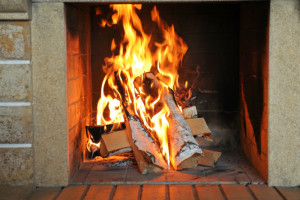
2. Have your chimney inspected and swept by a professional. “The U.S. Consumer Product Safety Commission, the U.S. Environmental Protection Agency, the National Fire Protection Association, and the American Lung Association – are some of the organizations that now encourage the regular maintenance of home heating systems and their chimneys in order to keep “the silent killer” at bay.” Read more about how your chimney can affect your health at the Chimney Safety Institute of America (CSIA).
DON’T try to clean your chimney yourself. Our chimney sweeps here at Billy Sweet’s Chimney Sweep are licensed, insured, and CSIA-certified. You cannot ensure the safety of your chimney unless it is inspected by a professional before wood-burning season.
3. Ventilate your home or business while your fireplace is in use. As gas is released through the chimney it changes the pressure in your home. Air pulled through the chimney is drawn from the house, and if the air isn’t replaced, the chimney may not work properly. This can be remedied by leaving a window cracked somewhere in the home.
DON’T operate large appliances that compete with your chimney for air or open you furnace door while ceiling fans or ventilation systems are running. When your fireplace works correctly, your heating system is more efficient.
4. Use proper kindling to start your fire. If there aren’t remaining embers in your furnace or fireplace, you should be able to ignite a fire using kindling and a small amount of paper.
DON’T use flammable fuels to start a fire. The vapor can ignite and start a chimney fire, or a house fire. If you use artificial logs, don’t treat them as real logs. Carefully read warning labels and instructions before putting artificial logs into your fireplace or furnace.
5. Feed your fire regularly to keep the fire at a steady temperature. This is the most efficient way to use a fireplace or furnace for home-heating.
DON’T overload your fire. Overloading your fireplace or furnace can overheat the walls around the furnace or fireplace and possibly damage the chimney.
Safety is Our Priority
Your fireplace is no laughing matter. According to the National Fire Protection Association Fire Analysis and Research Division “in 2011, an estimated 19,500 reported home structure fires involving fireplaces, chimneys and chimney connectors.” Click here for more tips to prepare your fireplace for winter weather.
At Billy Sweet’s we don’t want your business as the result of a chimney fire! We want your home or business to be safe this winter.
by Billy Sweet | Mar 27, 2015 | Carbon Monoxide Poisoning
Carbon monoxide is a dangerous gas that can cause poisoning when you are exposed to it. It is a particularly dangerous threat because it is odorless, colorless and otherwise undetectable to the naked eye. When you are exposed to carbon monoxide you inhale the fumes, which prevents oxygen from reaching your organs. The most important thing you can do to protect you and your family from carbon monoxide dangers is to prevent exposure in the first place.
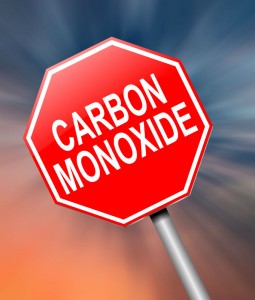
How Does Carbon Monoxide Poisoning Occur?
Carbon monoxide poisoning occurs in several ways, but in residential homes the most common way is through the misuse of heating appliances. In homes where wood-burning heating appliances are used, by-products can be left behind in chimneys. Soot, animal debris and flaked off masonry can all lead to dangerous toxins being release inside the home. Additionally, homes that aren’t well-ventilated can lead to carbon monoxide poisoning because there isn’t efficient air-flow while heating appliances are in use. Lastly, misuse of heating appliances can lead to poisoning, especially if inappropriate materials are being used or the operator doesn’t understand all components of the appliance.
Damaged Chimneys Can Lead To Carbon Monoxide Dangers
In homes where chimneys are older or have not been properly maintained chimneys can become blocked or rusted and this can result in carbon monoxide and other toxins being released into the air. Backdrafting, a common occurrence when chimney dampers and flues are not operating properly, can also lead to carbon monoxide poisoning.
Symptoms Of Carbon Monoxide Poisoning
If you suspect you or someone in your home is suffering from carbon monoxide poisoning, look for these common symptoms:
- Headache
- Weakness
- Dizziness
- Confusion
- Loss of vision
- Loss of consciousness
While these symptoms may seem subtle, they are life threatening. If you see any of these symptoms, remove everyone from the area and get emergency medical care immediately.
Luckily for homeowners, there are ways to prevent carbon monoxide poisoning including:
- Invest in a carbon monoxide detector that will alert you if the dangerous gas is detected.
- Never use stand-alone heating appliances like space heaters in small, enclosed areas.
- Only use wood-burning appliances in well-ventilated areas.
- Make sure you understand how to operate ALL components of your chimney before you light your first fire.
- Only burn appropriate, chemical and paint free wood in your wood-burning appliance.
- Inspect your heating equipment before use to make sure it is operating properly.
The single most important thing you can do as a homeowner is have your chimney professionally swept and inspected at least once a year. Hire a professional and experienced chimney sweeping company like Billy Sweet Chimney Sweep serving the Boston, North Shore and Portland areas to inspect, repair and if necessary, rebuild your chimney. Having an airtight chimney with a working damper and flue is the best way to prevent carbon monoxide build-up from your heating system. Our certified chimney sweeps are ready to inspect your chimneys and recommend any necessary add-ons or repairs. Contact the best in chimney sweeping to keep your home free of carbon monoxide dangers.
by Billy Sweet | May 10, 2014 | Chimney Maintenance, Fire Safety
Your chimney liner protects the exterior of your chimney wall from excessive heat. Over the life of your chimney, your liner may need repair or to be replaced.

by Billy Sweet | Nov 29, 2013 | dryer vent
What is Wrong with My Dryer?
Tired of hitting the “Start” button on your clothes dryer over and over to get your clothing dry? With all the things we have to do to maintain our homes, dryer vents often don’t even pop up on the radar. We’ll deal with the more pressing issues, like keeping our appliances working efficiently and replacing the roof when it starts leaking, when all the while lint is building up in our dryer vents, causing an unseen fire hazard that has cost many people their homes.
How do I know if my vents need to be cleaned?
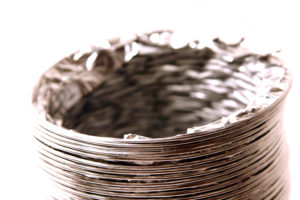 A good rule of thumb is to have the vents cleaned when you schedule your annual chimney maintenance. It’s a lot easier to remember this way, and gets two important things done at once. Here are some things to watch out for that could be telling you there’s a problem:
A good rule of thumb is to have the vents cleaned when you schedule your annual chimney maintenance. It’s a lot easier to remember this way, and gets two important things done at once. Here are some things to watch out for that could be telling you there’s a problem:
- Clothes drying slowly
- Lint behind dryer
- Clothes/dryer feel too hot
- Heat element in dryer burns out
- Water spots on walls
- Carbon monoxide alarm going off
But I clean my lint screen after every load!
Cleaning your lint screen before or after each load of laundry is an important practice that helps to reduce lint buildup in the ducts. This does a great job of slowing duct buildup down, but it doesn’t eliminate it. Lint still accumulates in the dryer hose, reducing the airflow and making the dryer work harder.
Dryers are now made to include switches that keep the temperature from running too high, but if you have lint clogging your dryer hose, it can wear the switch out and cause it to fail.
Still not convinced?
FEMA reports an average of 2,900 residential fires caused by clothes dryers, and the National Fire Protection Association recommends professional installation and maintenance of clothes dryers to ensure safe and proper functioning. Cleaning the vents doesn’t just remove a fire hazard from your home—it saves energy and increases the life of your dryer.
Cleaning dryer vents is one of the many things we are certified to take care of at Billy Sweet Chimney Sweep, so don’t hesitate to give us a call when it’s time for some maintenance.
by Billy Sweet | Oct 27, 2013 | Chimney Maintenance, Fire Safety
More Than Throwing In Some Newspapers
Many people enjoy using their fireplace during the winter to enjoy a warm fire. However, there are many people who do not know how to properly build a fire. It may seem as though it is as simple as throwing in some logs and lighting a match. However, building a fire safely and properly takes a bit of skill. There are a few simple tips any homeowner can follow to build a safe, roaring fire in their fireplace.
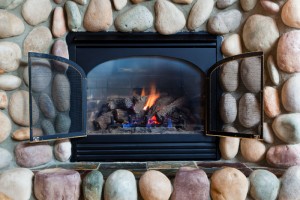
Even though you may want a fire so badly, you are tempted to use green or wet wood – it really hurts you in the long and short run. You’ll have a smoky fire and create additional fire hazards in your chimney.
One of the most important things to keep in mind before beginning a fire is that the fireplace and chimney must be kept clean. Before starting the fire, take a look into the chimney with a flashlight and make sure that there are no obstructions. In many cases, leaves or animals can make their way into the chimney and block it. If this happens, smoke will come right into the home instead of going out through the chimney, which can be unpleasant as well as unsafe for the family.
An essential first step to building a fire is one that many people tend to forget. Before doing anything at all, make sure that the damper is open. In most chimneys, this is done by simply pulling a small cord or handle. The damper opens up the chimney and allows smoke as well as other combustible gasses to exit the home safely. Leaving the damper closed is a common mistake and many people realize it only when the home begins to fill with smoke from the fireplace.
Once the chimney is clear and the damper is open, it is a good idea to prime the flue. When the damper opens, the flue will immediately fill with cold air. It must be warmed up gradually before it is safe to build a big fire in the fireplace. This is best accomplished by lighting a bit of newspaper and holding it under the flue. Once it becomes warm, it will be in perfect condition for a warm, cozy fire.
When building the fire, keep in mind that only certain materials should be burned in the fireplace. Some people choose to use coal but most find seasoned firewood to be the best choice. Before going into the fireplace, wood should be left out to season for about eight months to a year. If anything else is used, the consequences could be disastrous. The fire may burn too hot and fill the house with smoke, which could also lead to a chimney fire. Other materials may also create chemicals that are toxic to everyone in the home.
Of course, keeping the chimney and fireplace clean is an important part of home maintenance. However, it is a good idea to keep a layer of ash measuring about an inch on the bottom of the firebox. This insulates the firebox and helps to burn a strong, warm fire. After each fire, sweep out the fireplace but leave a small layer of ash behind to help insulate the next fire.
Following a few simple tips will not only keep a fire warm and cozy, but it will ensure that it is safe. Before doing anything, make sure that the flue is free of any blockages and that the damper is open to allow smoke out. Start the fire slowly and let it build to a safe and enjoyable glow.
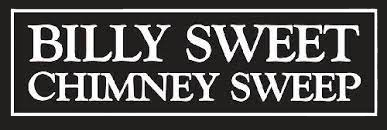



 A good rule of thumb is to have the vents cleaned when you schedule your
A good rule of thumb is to have the vents cleaned when you schedule your 